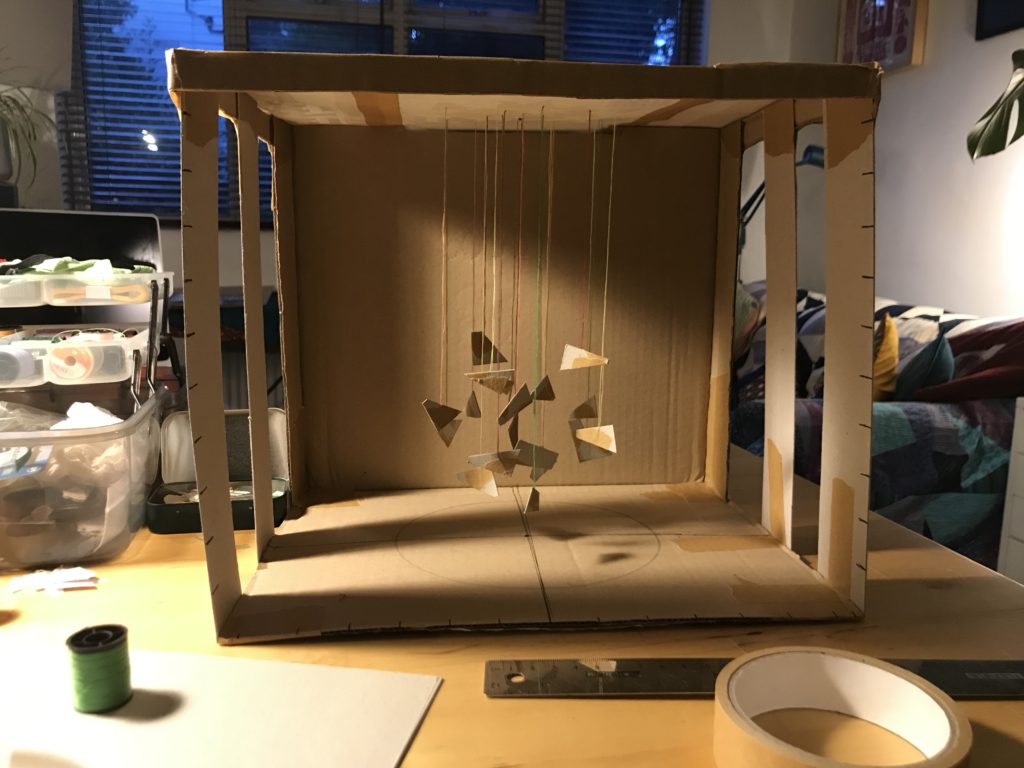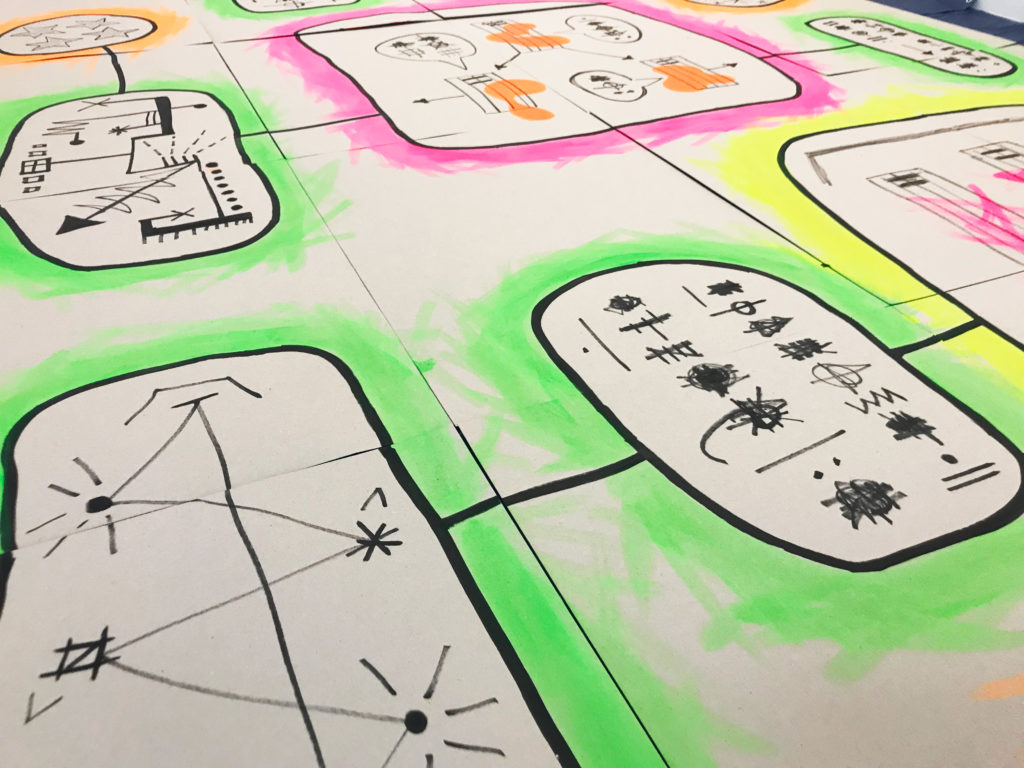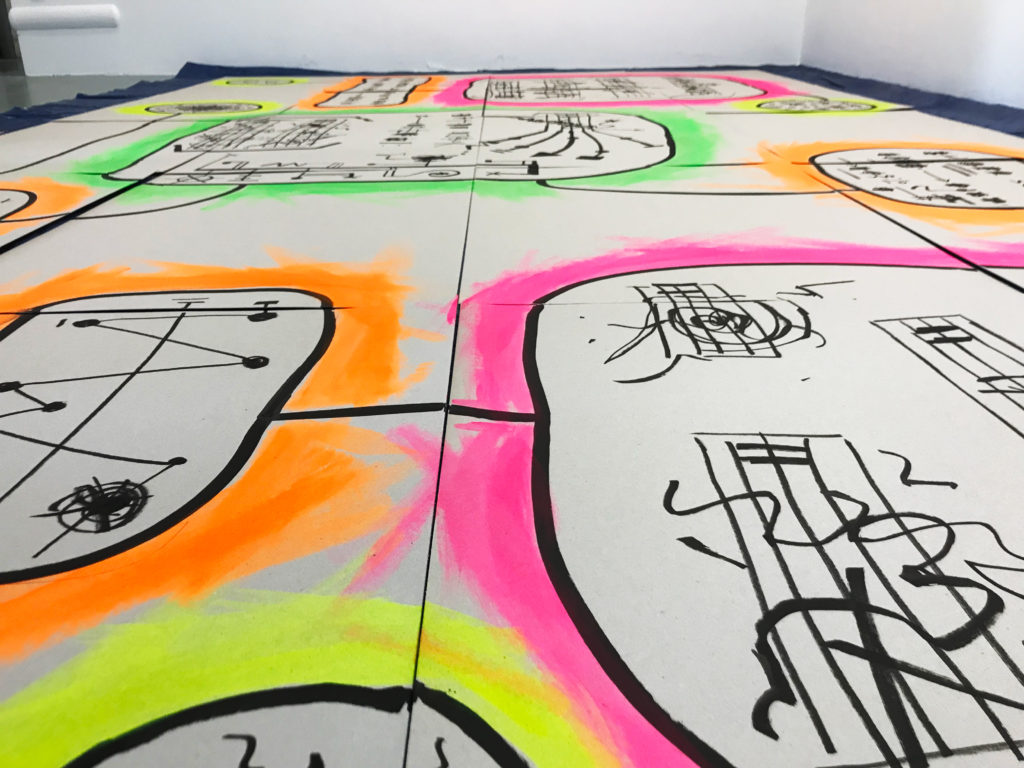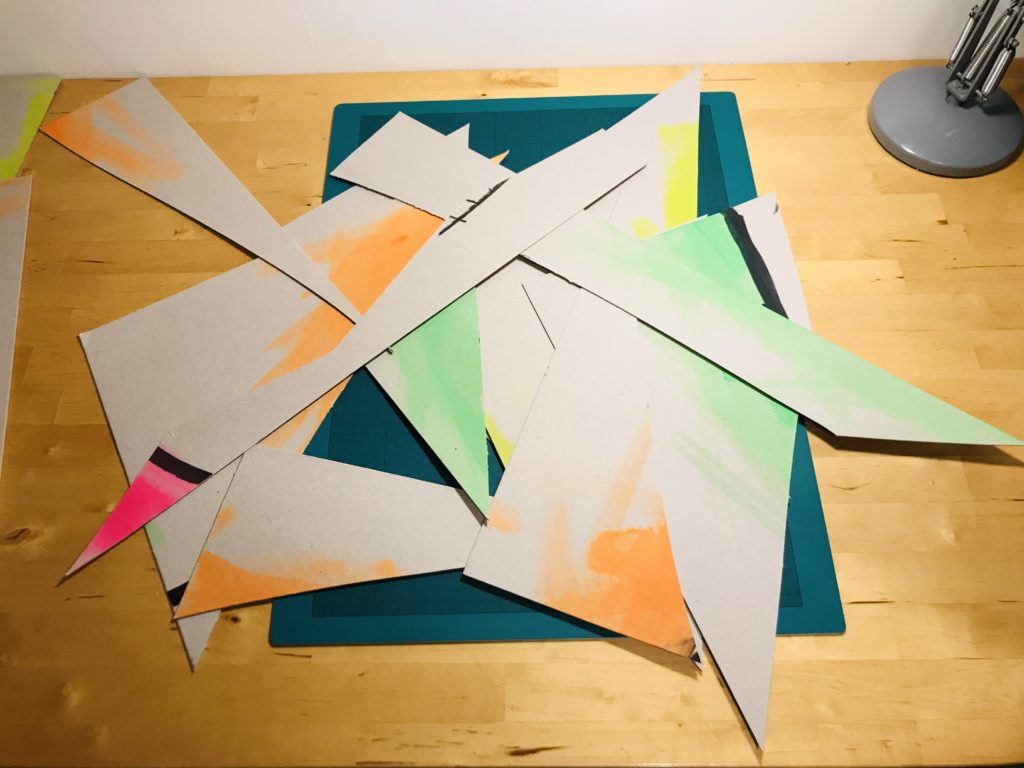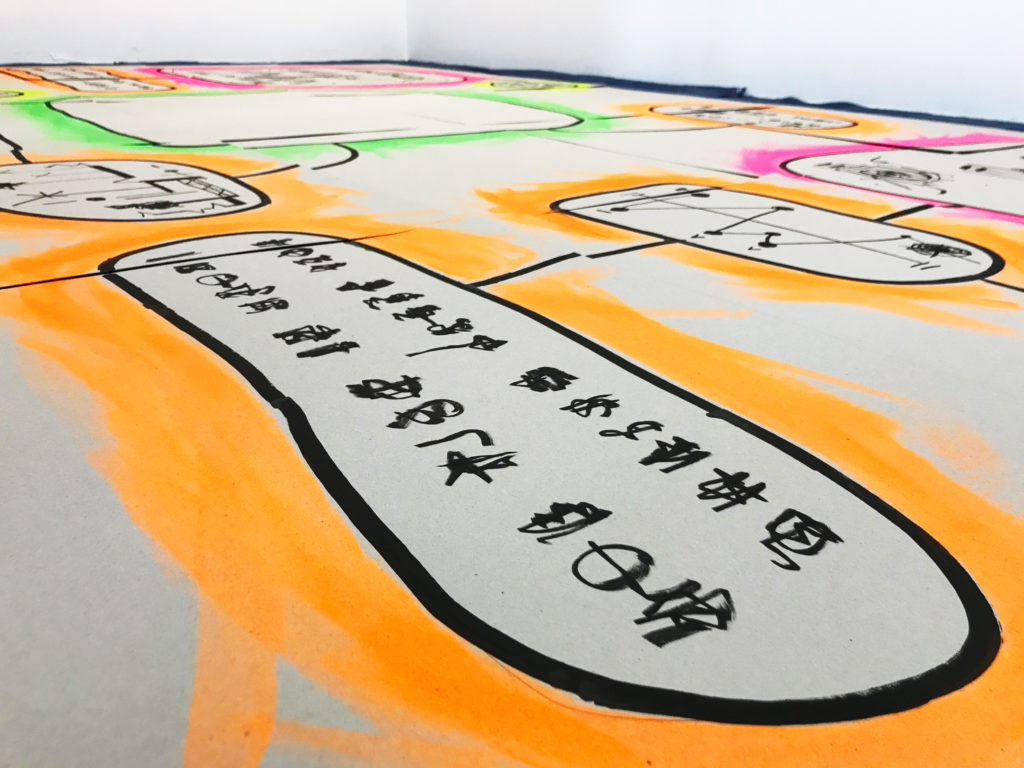 This post is an attempt to document the process of making my piece And then the next thing you know (coming up on Friday 19th November at hcmf//), as it has involved working in new ways. I wrote briefly about this here last summer, when I was chosen as one of the artists to receive a COVID-19 commission from hcmf//. The brief was to create a new work for up to three players to be performed at the 2021 edition of the festival, and my pitch was a trio piece for Tullis Rennie, Otto Willberg and myself inspired by Cornelia Parker’s Cold Dark Matter: An Exploded View.
This post is an attempt to document the process of making my piece And then the next thing you know (coming up on Friday 19th November at hcmf//), as it has involved working in new ways. I wrote briefly about this here last summer, when I was chosen as one of the artists to receive a COVID-19 commission from hcmf//. The brief was to create a new work for up to three players to be performed at the 2021 edition of the festival, and my pitch was a trio piece for Tullis Rennie, Otto Willberg and myself inspired by Cornelia Parker’s Cold Dark Matter: An Exploded View.
I’ve had a photo of Parker’s artwork – the fragments of an exploded garden shed hung in a gallery space – pinned up by my desk for a few years. The image of the component parts suspended in space resonates with my ideas about structuring compositions; a lot of my approach to writing music involves breaking down the elements of a composition and thinking about what should be pre-determined (and to what extent) by me in advance and what should be improvised collectively in the moment by the band. Then, when the pandemic hit in early 2020, the deconstructed fragments frozen in space began to reflect both my state of mind and the state of my work life, which had been turned upside down by cancellations, postponements and general uncertainty. It was these feelings that led to my idea for the hcmf// piece.
My plan was to make a giant graphic score and then deconstruct it – destroy it really – so that it became a collection of disconnected fragments. The original structure of the score and the information within it would be lost, leaving a garbled mess of partial material and no obvious way to go about playing it. This would then become a giant hanging object that I would suspend in the performance space, and that would be our ‘score’ for a piece improvised trio music.
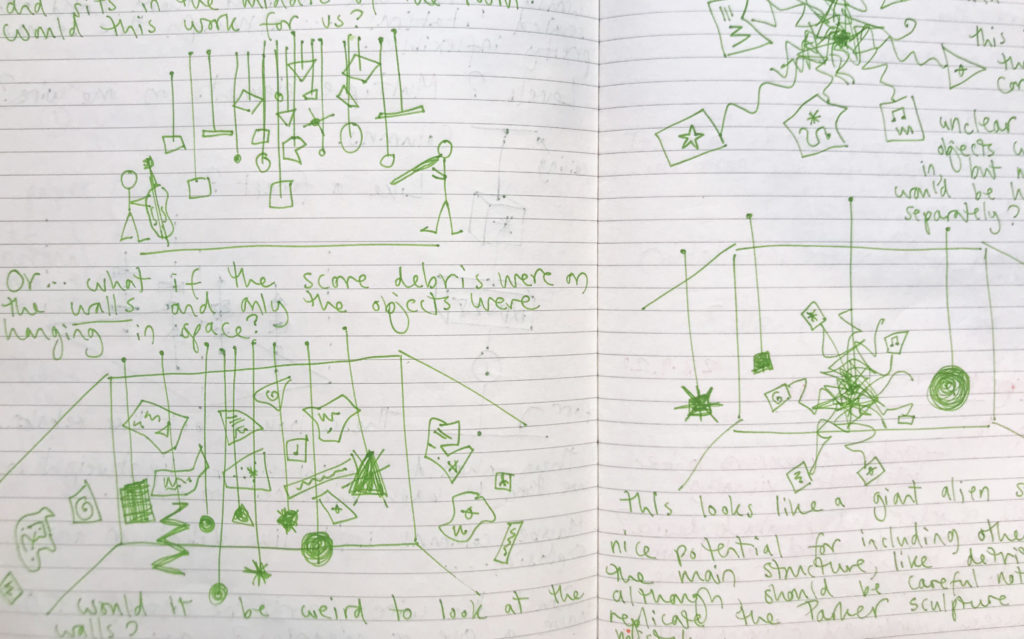 Something was taking shape…maybe
Something was taking shape…maybe
Turning an idea into reality
Once it had sunk in that this was really happening, my first job was to work out how to construct the physical object. What would it be made of? How big did it need to be? How and where would I make it? This was a fascinating process and opened up a whole new area of making something. Although I regularly make physical objects as part of my work – collage scores, booklets, a zine, hand-printed CD covers, etc – I’d never made anything this….big. Plus, the space we would play in was suddenly important in a new way: I needed to know its dimensions so I could have an idea about the size of the hanging score-fragment-cluster-object. Once I had that information, the way forward seemed to be to build a scale model. Again, not something I’ve needed to do before…
Busting out the paint and cardboard
Over the summer of 2021 I started to gather what I needed to make the score. I wanted the whole thing to be made out of recyclable (and ideally compostable/biodegradable) materials, so I settled on using greyboard; a very stiff, recycled cardboard. It has a textured looking surface but is actually smooth and perfect for painting onto. After working out the size of my giant score (6m x 4m!) I ordered up the board.
Initially I’d imagined the score to be a greyscale object, with the information painted on using black lines – like a giant version of my usual paper scores. Once I started gathering materials though, I realised I wanted to add colour. As time went on, the grey and black object seemed a bit bleak, and I wanted to add an injection of energy and hope, so I decided to use….neon paint! For the black lines I got some really fat paint markers.
The next thing to sort out was where to make the giant score. Unsurprisingly there isn’t 6m x 4m of free floorspace in my flat, so it needed to be somewhere else. Luckily, the building where I use a shared studio has a bookable project space, and my friend and studiomate Sam had some time booked in August that he didn’t have any plans for. I moved in and spent an intense few days making the score.
As the fragments were ultimately going to hang in space, I realised that I needed to make it double sided. This meant painting it twice. It took a day to do each side, leaving the paint to dry overnight before flipping all the panels and starting again from scratch. The two sides ended up looking really different; based on the same structure but with a lot of variation in the graphics and notation.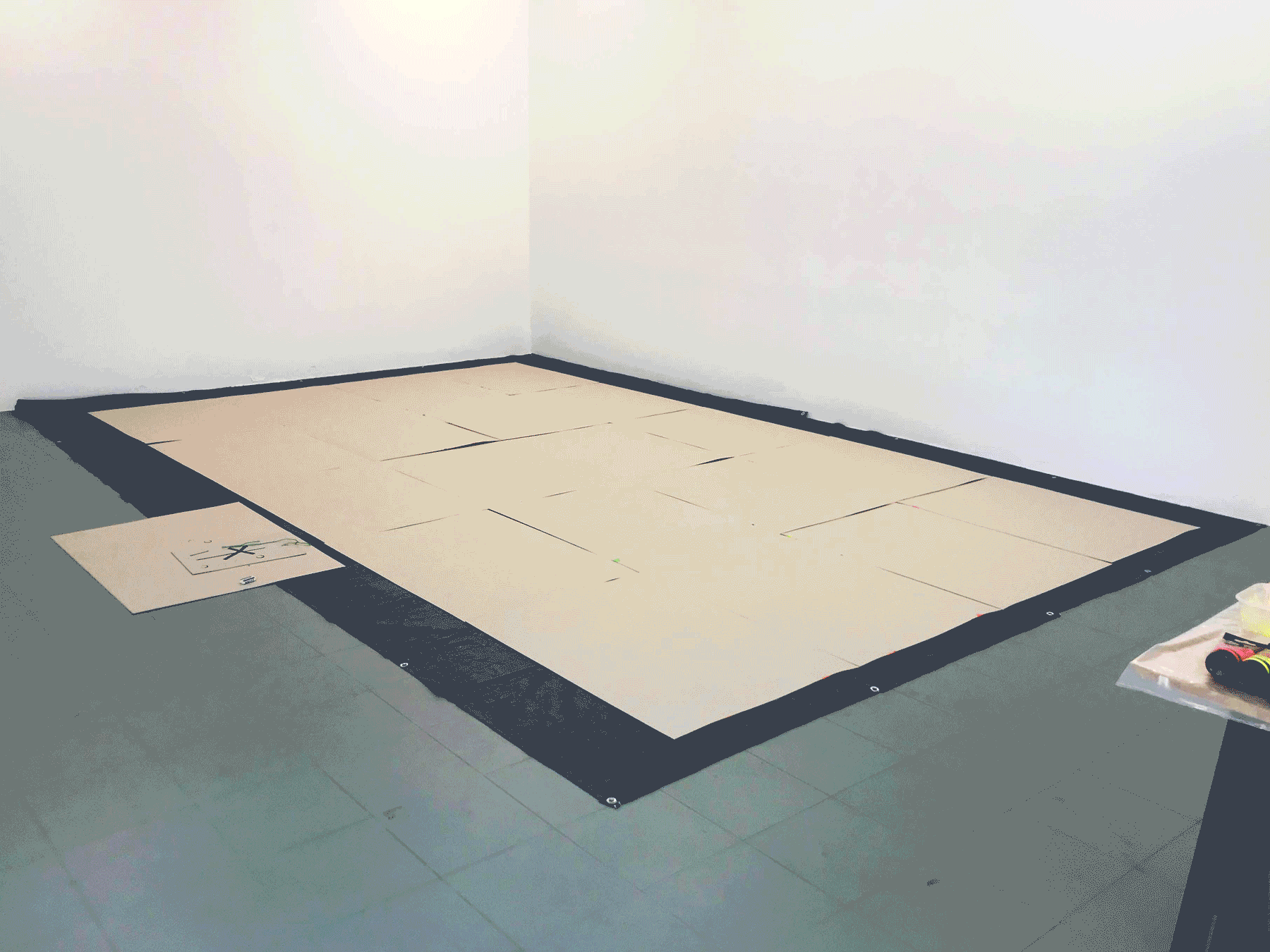 Painting the giant score
Painting the giant score
Once it was all painted up, I had to get it out of the space asap as the room was about to be used for an s10c gig! I took a lot of photos of the score laid out – both sides and a scrambled combination of both – as this would be the last time it would appear in this form.
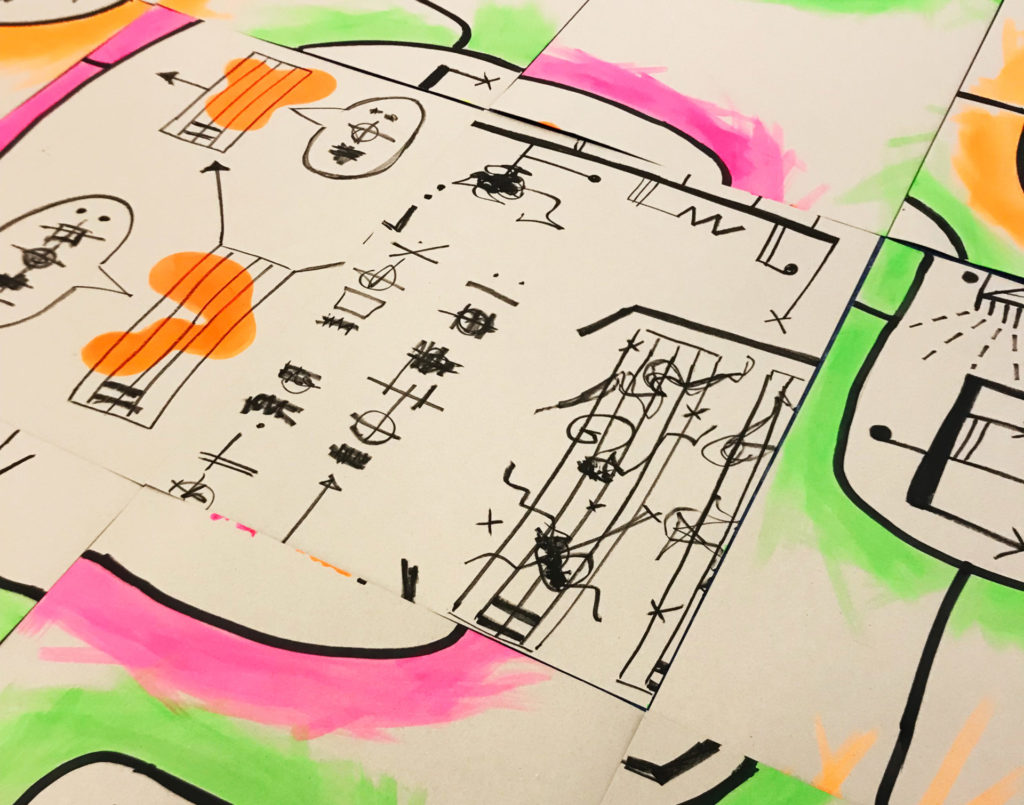 Scrambled panels from both sides creating a nice effect
Scrambled panels from both sides creating a nice effect
I then stacked up the panels onto my baritone trolley and loaded out. After that, they lived under my sofa for a couple of months…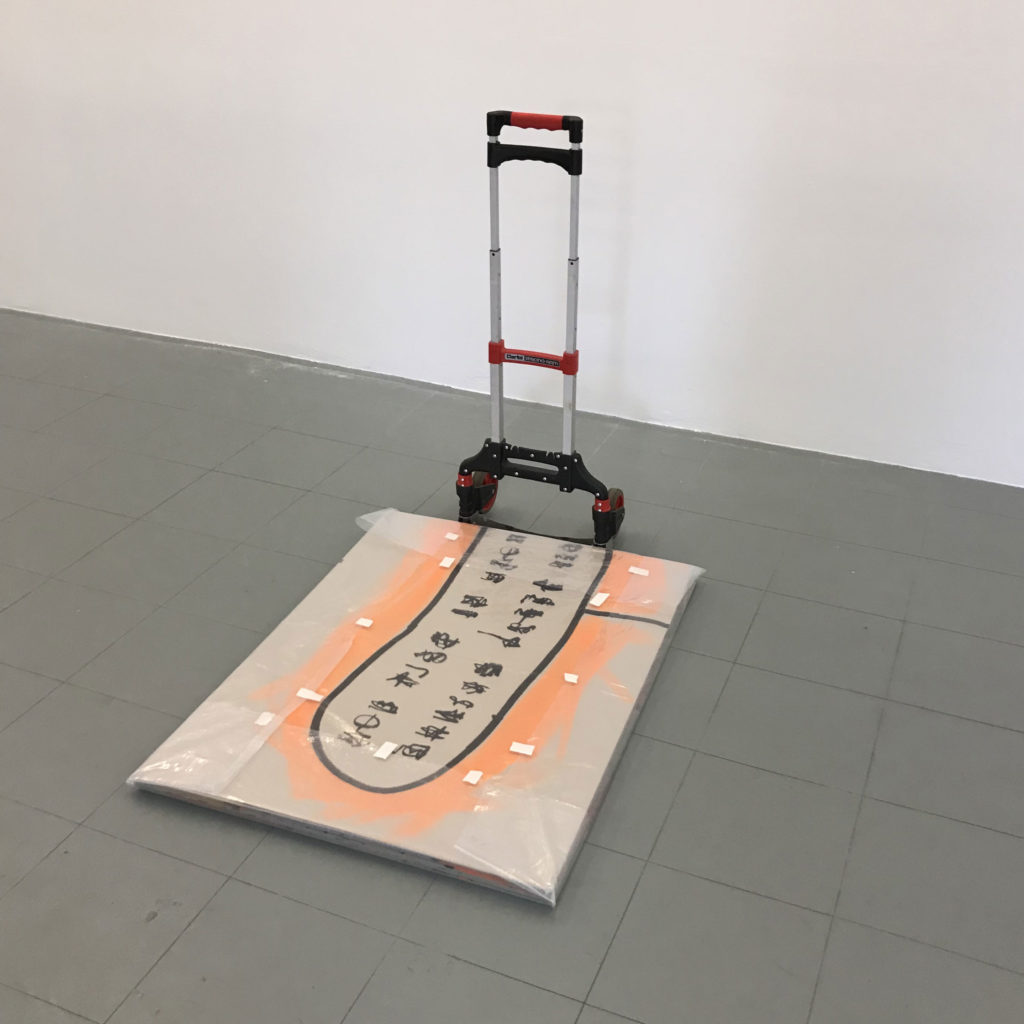 Ready for transport
Ready for transport
Cutting room floor
It was the beginning of October when I was able to work on this project again. The painted boards were waiting under the sofa, and the next stage was the cut. I had already tested cutting the greyboard with a stanley knife over summer, so I got straight on with carving up the panels over a couple of days. It was interesting to think about the fragments hanging in the space, making sure I had a variety of different sizes and shapes. My scale model was very useful at this point to keep a clear idea of what I was aiming for – although the final arrangement would be improvised once I was in the physical venue space in November.
To hang the fragments I decided to use neon-coloured twine. I conducted a few tests to see whether the twine I was looking at was up to the job, and after hanging large pieces of cardboard around the flat for days at a time decided that it was. With all my cut-up pieces finished, the next job was to make the holes for hanging. Once that was done the physical object was finished and ready to be shipped to Huddersfield!
 Reinforcing the holes…with pink gaffa tape
Reinforcing the holes…with pink gaffa tape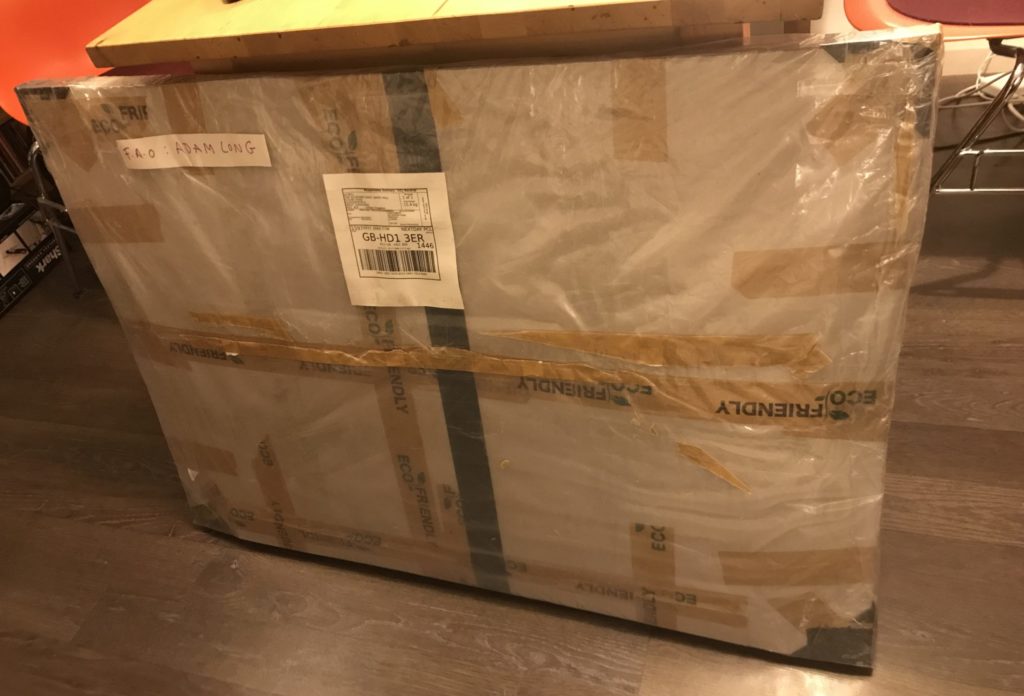 On its way out!
On its way out!
Audio fragments
In addition to the deconstructed score, I wanted to bring in an element of fragmented audio to the performance. The trio had rehearsed several times in lockdown remotely, using JackTrip, so I had server recordings of our improvisations. This struck me as the perfect raw material: the sounds of us trying to connect musically when we couldn’t be in a room together. I listened back to the sessions and pulled out some snippets, then distributed them to the trio. In performance, we will all have the material on hand to throw into the music, using samplers and electronics to mangle, chop and distort our original sounds. Here they are in their raw form:
At the time of writing, the performance is later this week. All the elements are in place and I’m looking forward to finally being in the space, impovising with the score and fragments to create some collective music together in a room….
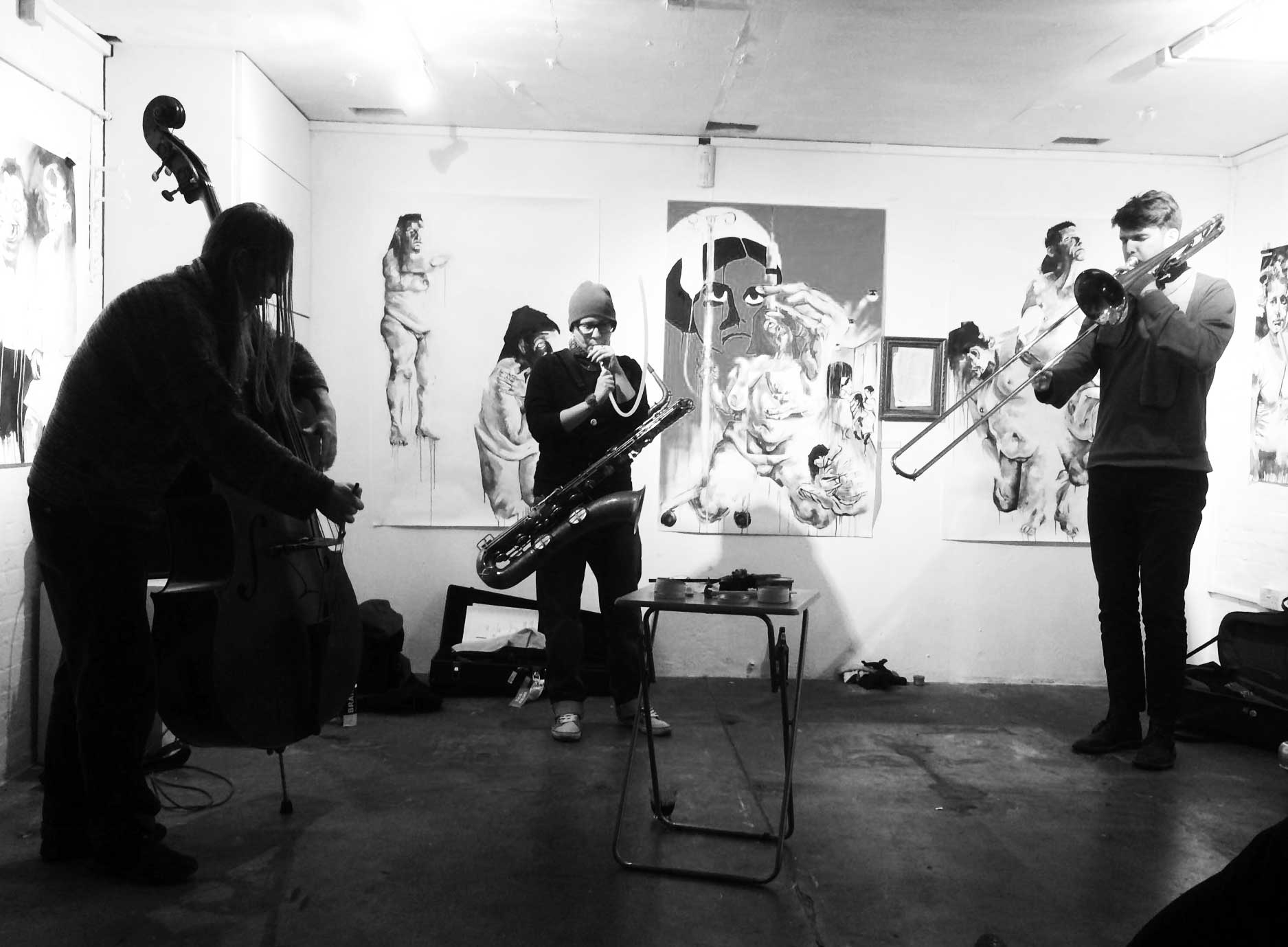 The trio playing at Hundred Years Gallery, December 2019 – the last time we played together in person!
The trio playing at Hundred Years Gallery, December 2019 – the last time we played together in person!

